Don’t Miss the Rare Activation of Prince Edward & Marion Islands
Greetings DX chasers! The DXpedition calendar heats up in May with some superb opportunities to log ATNOs, fill bands, and add some interesting IOTA conquests thanks to activations of locations spanning the globe, from an ultra-rare operation from a small subantarctic volcanic island in the southern Indian Ocean to a DXpedition from the southernmost volcano of Honduras.
To get you pumped up for the pileups, here are a few May 2025 DXpeditions along with QSL cards from the DXing enthusiasts at DX Engineering.
Prince Edward & Marion Islands
The ZS8W DXpedition by Yuris, YL2GM from Marion Island (IOTA AF-021) is scheduled to continue until May 16 while he serves as a radio engineer on the island’s SANAP (South African National Antarctic Program) station. Per DX World, Yuris had made several unsuccessful attempts to get permission to operate from this marine-protected area since 2018. You can try to reach YL2GM on 160-6M in CW, SSB, and Digital. Here is a VOACAP website for ZS8W, offering short- and long-path HF propagation predictions. Read more about VOACAP in this OnAllBands article by Ward, N0AX, “Propagation Paths—the Long and the Short of It.”

Among other equipment, ZS8W is relying on Yaesu FT-891 HF/50 MHz Transceivers and a DX Commander 40-10M Vertical Antenna. DX Engineering is the exclusive North American retailer of DX Commander’s lineup of high-performance HF multiband verticals.
About Prince Edward and Marion Islands
Located in the subantarctic Indian Ocean, Prince Edward Island and Marion Island (known collectively as Prince Edward Islands) have remained an elusive bounty for many DXers trying to “work the world.” As of this blog, these islands, declared Special Nature Preserves by the South African government, rank at number 11 on Clublog’s DXCC Most Wanted list (mostly SSB), while QSOs in CW (ranked #2) and Digital (ranked #3) to this dual entity are almost as rare as contacts with North Korea (P5).
According to Freshdesk.com. the last activation of Marion Island was the ZS8Z operation from January to November 2017. There have only been a handful of operations from the ZS8 prefix since it became a DXCC entity in 1948.
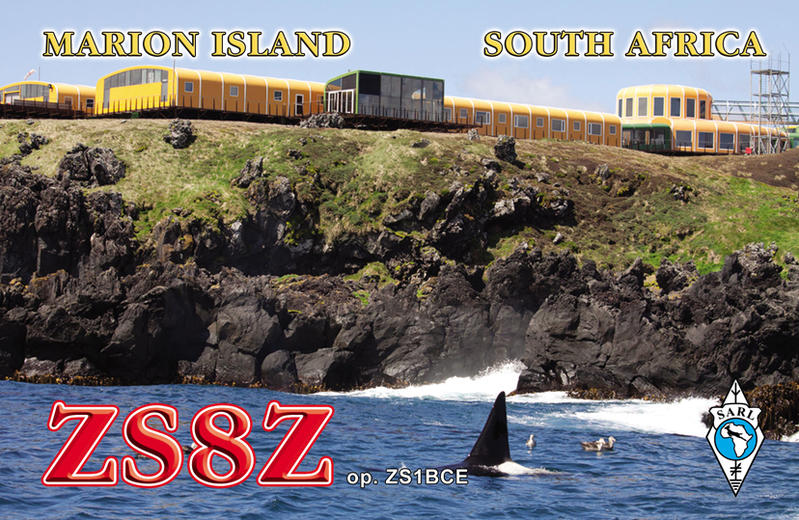
Mark, W8BBQ, DX Engineering customer/technical support specialist, snagged this ZS8M QSL card in 2010. Marion Island (ranked #3 Most Wanted at the time) was an ATNO for Mark.
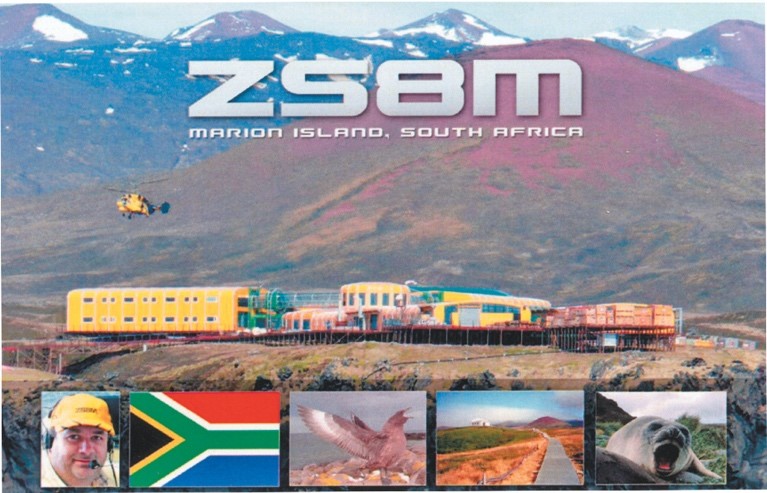
His contact was made with Pierre D. Tromp, ZS1HF/ZS8M/ZD9M (SK), noted ham and adventurer who was serving as a radio technician on Marion Island’s newly built meteorological/biological station, which replaced the original research facility constructed in 1948. In addition to studying the weather, scientists on the island research the area’s penguins, gulls, albatrosses, petrels, and seals.
Concerns about the island’s bird population restricted Tromp’s antenna deployment to an inverted-V broadband dipole. Further, ham radio activity wasn’t Tromp’s main purpose for being on the island, so reaching him during his stay between May 2010 and April 2011 was hardly a sure thing. Tromp became a silent key at the age of 61 on September 4, 2023.
Marion Island is accessible by both boat and helicopter, thanks to a helipad near the station. Other than research staff, Marion and St. Edward islands are uninhabited. The islands, which were claimed by South Africa in 1947/1948, are about 3,000 miles from the South Pole and 3,200 miles from the Equator.
Tiger Island, Honduras
The HR4 DXpedition by PY8WW from Tiger Island (IOTA NA-060) is scheduled for May 13-18 on 40-10M in CW, SSB, and Digital.
Tiger Island (El Tigre) is located in the Gulf of Fonseca on the Pacific coast of Central America. The island is a basaltic stratovolcano—a volcano built up by layers of lava and tephra (fragmented material produced by volcanic eruptions). Part of the municipality of Amapala, Tiger Island has a population of around 3,000. Honduras (population 10.6 million) ranks as the 197th Most Wanted DXCC Entity.
David, K8DV, DX Engineering customer/technical support specialist, contacted HR9/WQ7R operating from Roatan Island (IOTA NA-057) on 160, 80, and 30M CW. Forty miles off the north coast of Honduras, Roatan is the largest of the country’s Bay Islands (eight islands and 53 cays) in the Caribbean Sea, measuring 48 miles long and five miles across.
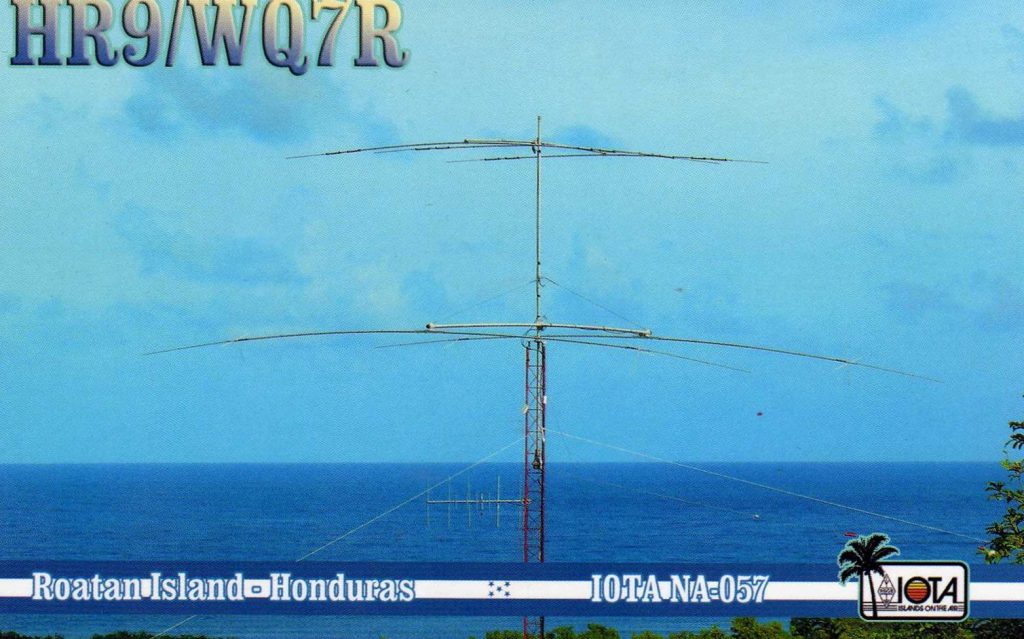
Austral Islands
The multi-operator TX9A HF activation of the Austral Islands from Tubuai Island (IOTA OC-152) is scheduled to run until May 7. The Austral Islands, an overseas country of the French Republic in the South Pacific, has a total population close to 7,000 and is the 74th Most-Wanted DXCC Entity per Clublog. Tubuai Island (population 2,185, 17.4 square miles) is the main island of the Austral Islands group.
Tom, KB8UUZ, DX Engineering technical writer, produced three Austral Islands QSL cards from his collection: TX5D, October 2013 (10M SSB); TX5RV, March 2013 (10M SSB); and TX6G, March 2014 (10M SSB). All three DXpeditions were from 6.9-square-mile Raivavae Island (population 900).
The TX5RV card shows the last remaining original stone tiki statue on Raivavae. Most artifacts were plundered from the island and can now be found in private collections and museums.
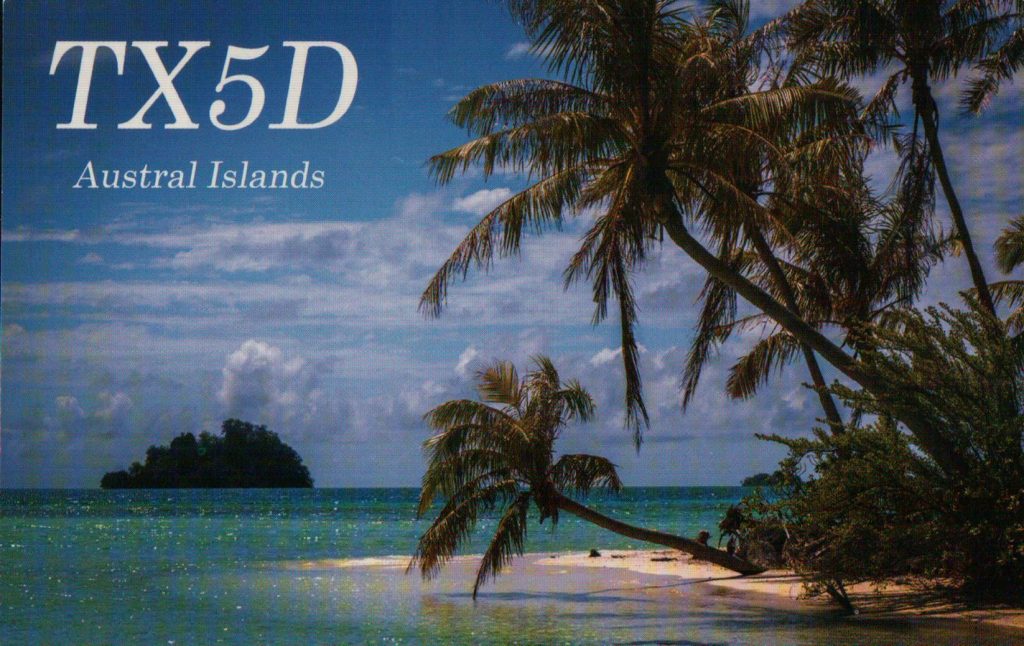
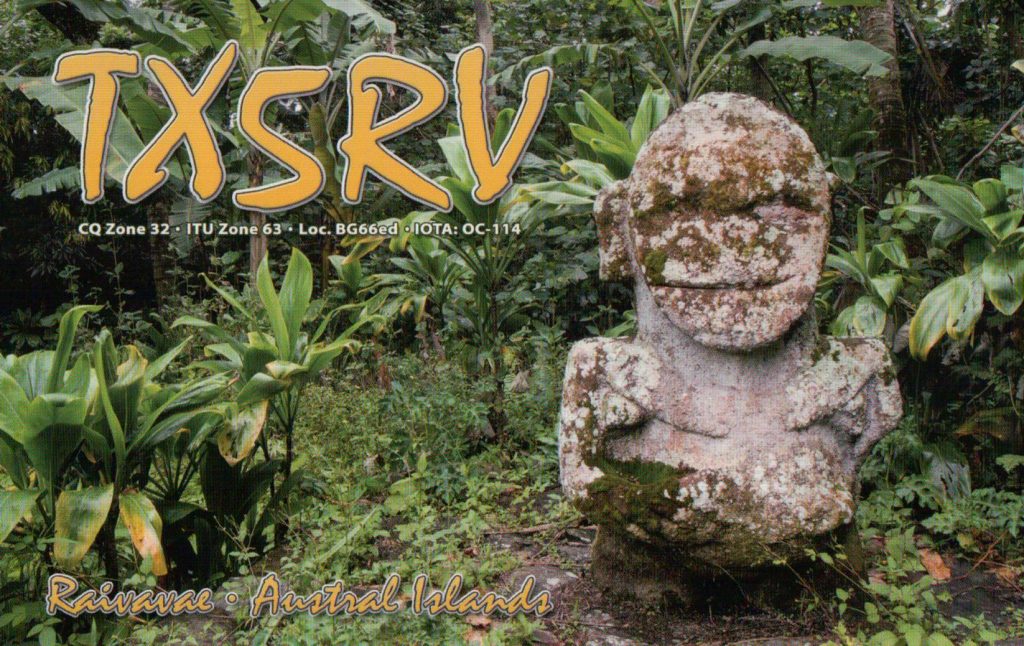

For all your DXing, contesting, or rag-chewing needs—whether you’re a Big Gun, Little Pistol, or somewhere in between, visit DXEngineering.com for transceivers, amplifiers, antennas,
headsets, and so much more.
***
Editor’s Note: Every month, DX Engineering features QSL cards from our team members’ personal collections. To highlight upcoming DXpeditions, we’ll be displaying a few of our favorite cards along with details about what it took to make these contacts. We’re excited to share some of the special cards pulled from the thousands we’ve received over the years. We look forward to seeing your cards as well!

